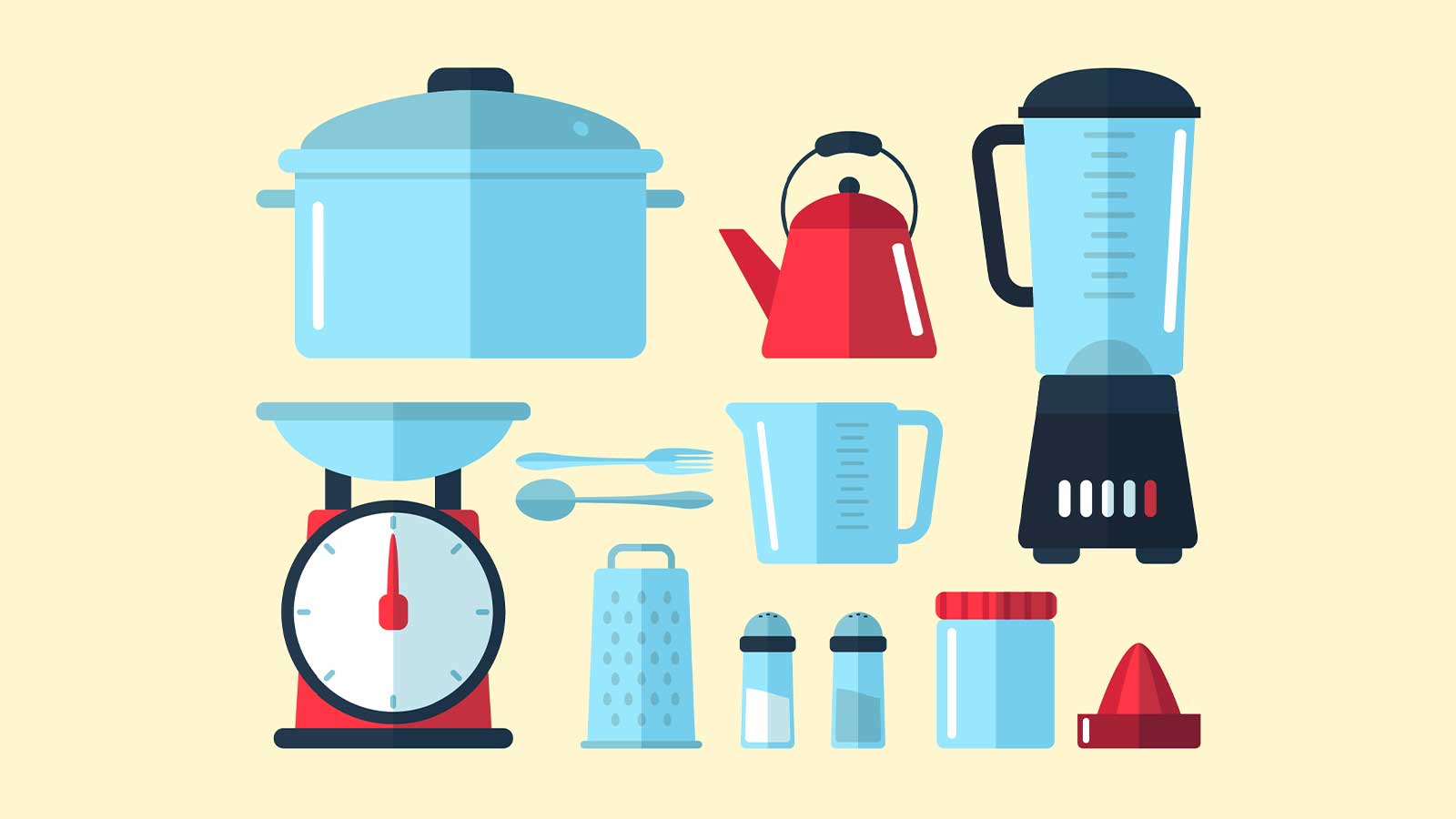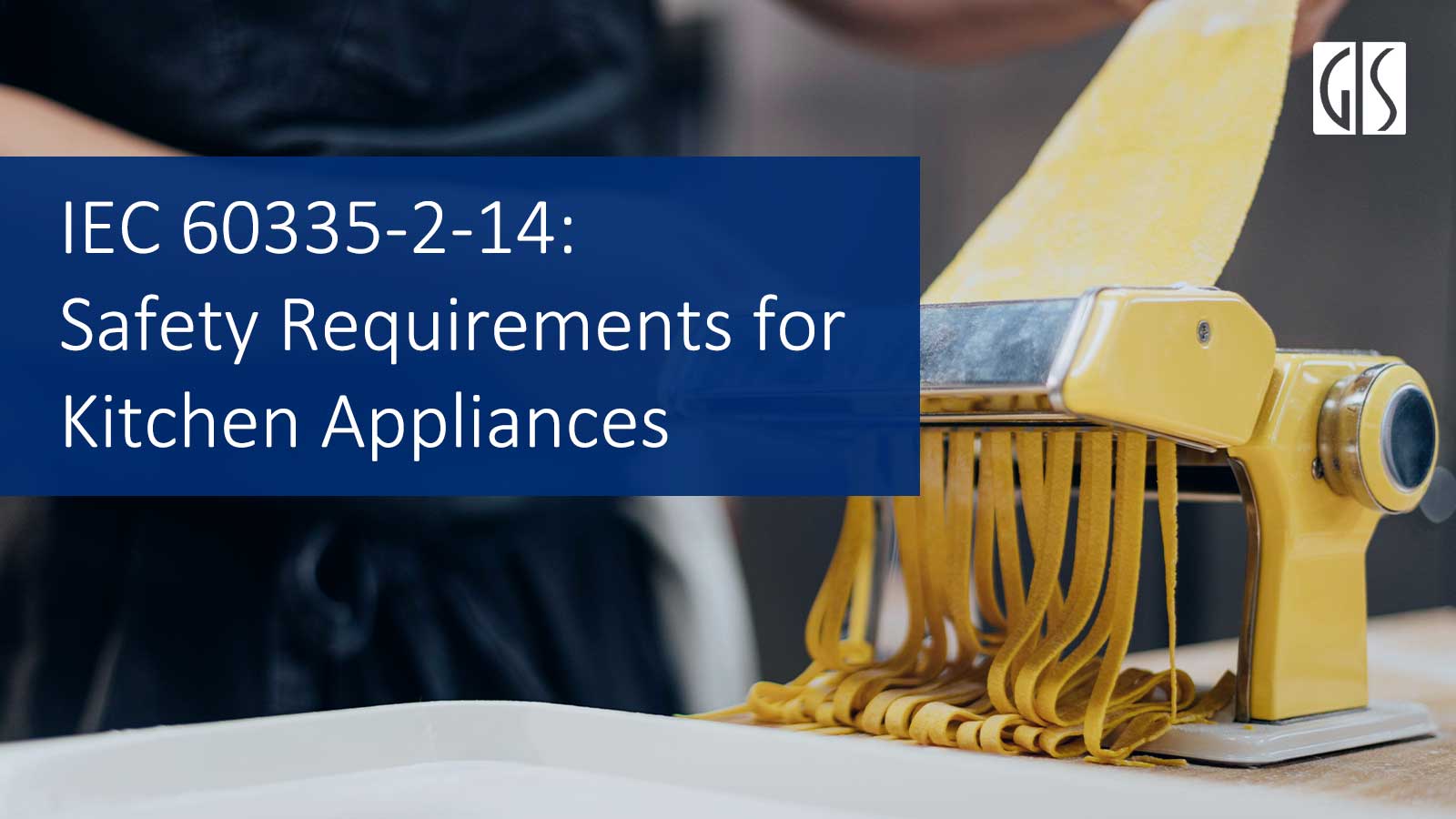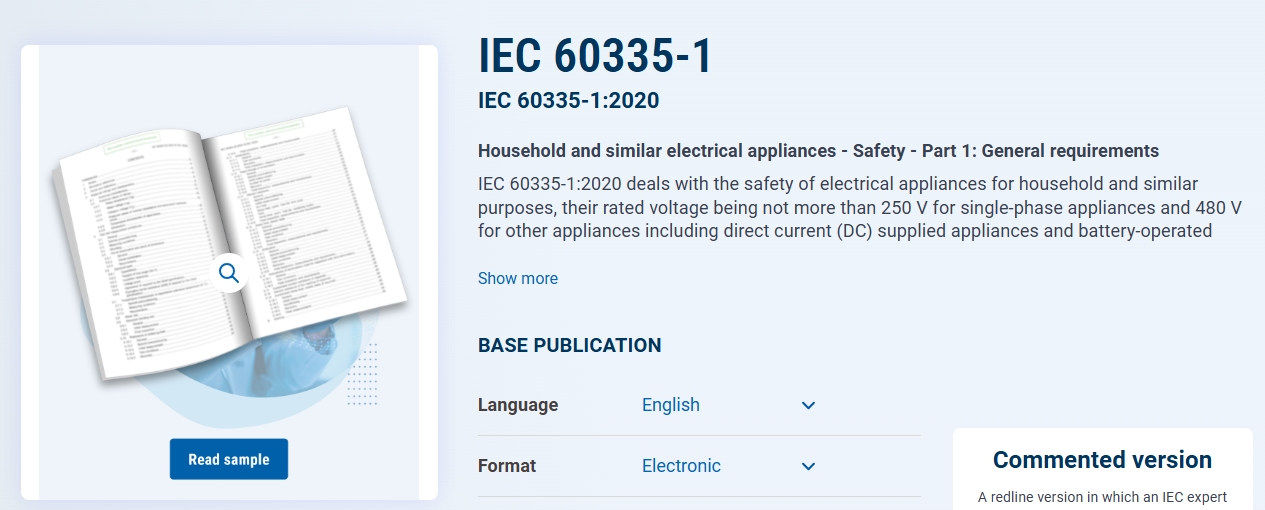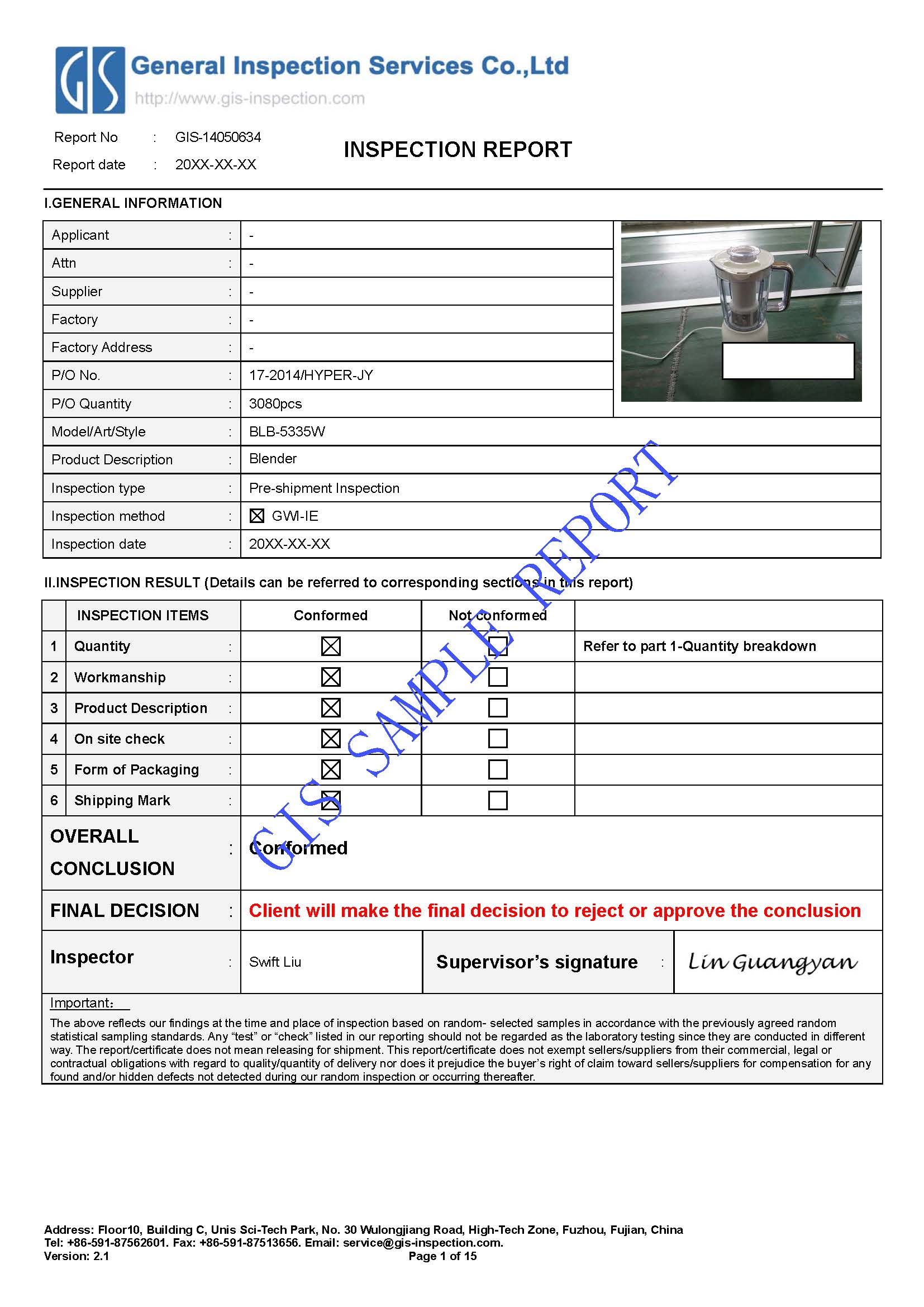Kitchen appliances play a vital role in everyday life. Ensuring the safety of kitchen appliances is essential to protect users and maintain trust in brands and products.
IEC 60335—2-14 is the international safety standard of electrical appliances for kitchen appliances, which provides general testing requirements, markings, classifications, and instructions for kitchen machines such as auger juicers, blenders, ice cream machine, can openers, and more.
What is IEC 60335-2-14?
Since 1970, the IEC has published a series of standards to enhance the safety of household devices. As the technologies have evolved, with the introduction of the digital environment into consumer goods and with the growing complexity, the safety of household appliances was more important than ever.
IEC 60335-2-14 recognizes the internationally accepted level of protection against hazards such as electrical, mechanical, thermal, fire and radiation of appliances when operated as in normal use taking into account the manufacturer's instructions. It also covers abnormal situations that can be expected in practice and takes into account the way in which electromagnetic phenomena can affect the safe operation of appliances.
This standard takes into account the requirements of IEC 60364 as far as possible so that there is compatibility with the wiring rules when the appliance is connected to the supply mains. However, national wiring rules can differ.
This standard is a product family standard dealing with the safety of appliances and takes precedence over horizontal and generic standards covering the same subject.
The latest update to IEC 60335-2-14:2025
The seventh edition of IEC 60335-2-14, published in 2025, represents a significant technical revision, canceling and replacing the sixth edition (2016) and its Amendment 1:2019.
It includes updated definitions and clarifies the scope, explicitly excluding professional-use kitchen machines, reinforcing its focus on household and similar appliances. It provides greater detail on safety testing procedures for machines like food processors, blenders, mixers, and similar devices.
Additionally, a harmonized Test Report Form (TRF IEC 60335-2-14Z:2025) has been introduced to improve the consistency of certification and reporting across global markets.
Learn more details: https://www.gis-inspection.com/resource/updates-to-iec-60335-2-14-safety-requirements-for-kitchen-appliances
The scope of IEC 60335-2-14 Particular Requirements for Kitchen Machines
The IEC 60335-2-14 deals with the safety of electric kitchen machines for household and similar purposes, their rated voltage being not more than 250 V including direct current (DC) supplied appliances and battery-operated appliances.
The appliances that are within the scope of this standard are:

- bean slicers;
- auger juicers;
- blenders;
- can openers;
- centrifugal juicers;
- churns;
- citrus-fruit squeezers;
- coffee mills not exceeding a hopper rated capacity of 500 g;
- cream whippers;
- egg beaters;
- food mixers;
- food processors;
- grain grinders not exceeding a hopper rated capacity of 3 l;
- graters;
- ice-cream machines, including those for use in refrigerators and freezers;
- knife sharpeners;
- knives;
- mincers;
- noodle makers;
- peelers;
- shredders;
- sieving machines;
- slicing machines.
Notes: Appliances intended for normal household and similar use and that can also be used by laypersons in shops, in light industry, bed and breakfast and on farms, are within the scope of this standard. However, if the appliance is intended to be used professionally to process food for commercial consumption, the appliance is not considered to be for household and similar use only.
As far as is practicable, this standard deals with the common hazards presented by appliances which are encountered by all persons in and around the home. However, in general, it does not take into account:
- persons (including children) whose
- physical, sensory or mental capabilities; or
- lack of experience and knowledge prevents them from using the appliance safely without supervision or instruction;
- children playing with the appliance.
It does not take into account the use of the following appliances by children:
- bean slicers;
- blenders including hand-held blenders;
- juicers other than citrus-fruit squeezers;
- food mixers;
- food processors;
- knives;
- mincers;
- noodle makers;
- lathe-type or hand-held peelers;
- vegetable graters/shredders;
- slicing machines.
Attention is drawn to the fact that
for appliances intended to be used in vehicles or on board ships or aircraft, additional requirements can be necessary;
in many countries, additional requirements are specified by the national health authorities, the national authorities responsible for the protection of labour and similar authorities.
IEC 60335-2-14 does not apply to:
- slicing machines having a circular knife the blade of which is inclined at an angle exceeding 45° to the vertical;
- breadmakers (IEC 60335-2-9);
- soy milk makers (IEC 60335-2-15);
- food waste disposers (IEC 60335-2-16);
- ice-cream appliances with incorporated motor compressors (IEC 60335-2-24);
- kitchen machines intended for commercial purposes (IEC 60335-2-64);
- kitchen machines intended for industrial purposes;
- kitchen machines intended to be used in locations where special conditions prevail, such as the presence of a corrosive or explosive atmosphere (dust, vapour or gas).
Safety Requirement for Kitchen Appliances
IEC 60335(IEC 60335: The Safety of Household and Similar Electrical Appliances) is a series of international standards that govern the safety of household and similar electrical appliances. Part 1 (IEC 60335-1) outlines general safety requirements applicable to all such appliances, while Part 2- IEC 60335-2-14 provides particular requirements for kitchen machines like blenders, mixers, and food processors, IEC 60335-2-14 is the relevant particular standard.
Following is the key safety requirements from these standards for kitchen machines:
General Requirements (from IEC 60335-1, applicable unless modified by IEC 60335-2-14):
- Electric Shock Protection (Clause 8): The primary objective is to safeguard users from electric shocks. This involves several critical tests. The Insulation Resistance Test measures the electrical resistance between live parts and accessible surfaces, ensuring values exceed specified limits (e.g., 2 MΩ for basic insulation) to prevent current leakage. The
- Dielectric Strength Test applies a high voltage (e.g., 1,500V AC) between live parts and accessible surfaces for one minute, verifying that no breakdown or flashover occurs.
- Leakage Current Test quantifies the current flowing through the appliance under both normal and fault conditions, ensuring it remains below specified limits (e.g., 0.75 mA for handheld devices) for user safety. Common failures in this area include poor insulation design and inadequate creepage and clearance distances. Best practices involve using double or reinforced insulation for high-risk components and regularly inspecting insulation materials for wear or damage.
- Mechanical Hazards (Clause 20): These requirements aim to prevent injuries from moving parts, sharp edges, or unstable appliances. The Stability Test involves tilting the appliance at a 10° angle to confirm it does not tip over, thereby ensuring operational stability and preventing accidents.
- Moving Parts Test ensures that accessible moving parts, such as blender blades, are adequately guarded or require a deliberate action (e.g., an interlock switch) to operate safely.
- Impact Test assesses the appliance's durability and resistance to mechanical impact by dropping a 0.5 kg steel ball from 10 cm onto its surface. Common failures include unstable designs (e.g., top-heavy appliances) and exposed blades or pinch points. Recommended practices include adding non-slip feet for stability and utilizing interlock switches to disable moving parts when covers are removed.
- Thermal Safety (Clause 11): The goal here is to prevent overheating, burns, or fire risks. The Temperature Rise Test involves operating the appliance at maximum load and measuring temperatures on accessible surfaces, internal components, and insulation, ensuring they remain within safe limits (e.g., 60°C for plastic handles).
- Overload Test simulates abnormal conditions (e.g., blocked air vents) to verify that the appliance does not overheat or pose a fire risk under stress.
- Flammability Test exposes non-metallic parts to a flame to assess their fire resistance and ensure they do not contribute to fire spread. Common failures often stem from overheating motors or heating elements and the use of non-flame-retardant plastics. Best practices include incorporating thermal cutoffs or fuses to shut down overheating components and using UL 94 V-0 or V-2 rated plastics for fire resistance.
- Moisture Resistance (Clause 15): This clause ensures appliances can withstand exposure to water or humidity. The Drip Test (IPX1) simulates light rain by dripping water onto the appliance to check for water ingress into electrical components.
- Splash Test (IPX4) sprays water from all directions for five minutes to assess the appliance's ability to withstand water splashes.
- Humidity Test exposes the appliance to 93% humidity at 40°C for 48 hours to ensure it can withstand humid environments without degradation or corrosion. Common failures include water ingress into electrical components and corrosion of metal parts. Recommended practices include using waterproof seals and gaskets and applying conformal coating to Printed Circuit Boards (PCBs) for moisture protection.
- Abnormal Operation (Clause 19): This section tests the appliance's behavior under fault conditions, such as blocked vents or locked motors. The Motor Lock Test involves locking the motor and powering the appliance to ensure it does not overheat or catch fire under stalled conditions.
- Component Failure Test simulates various failures (e.g., short circuits) to verify that safety mechanisms, such as fuses, activate correctly, preventing hazards. Common failures often involve a lack of overcurrent protection or inadequate ventilation during faults. Best practices include adding thermal fuses or PTC thermistors to protect motors and designing vents to prevent blockage by debris.
- Radiation and Chemical Safety (Clause 32): This clause aims to protect users from harmful radiation or toxic substances. The UV Radiation Test measures UV emissions from appliances with UV sources (e.g., sterilizers) to ensure they are within safe limits.
- Chemical Leakage Test checks for leaks in appliances containing chemicals (e.g., steam irons) to prevent user exposure to hazardous substances. Common failures include excessive UV exposure and leakage of hazardous chemicals. Recommended practices include using UV-blocking materials or shields and ensuring chemical containers are leak-proof and durable.
Specific Requirements for Kitchen Machines (from IEC 60335-2-14):
- Interlocks for moving parts: Kitchen machines with sharp or fast-moving parts (e.g., blender blades, food processor discs) must have safety interlocks preventing operation unless all parts are correctly assembled and covers are securely closed. This is crucial for preventing access to dangerous areas during use.
- Protection against unintentional starting: Hand-held blenders or knives often require a deliberate, two-step action or a continuously pressed switch to operate, preventing accidental activation that could cause injury.
- Feed opening dimensions: For appliances like juicers or food processors with feed openings, the dimensions are specified to prevent users from accidentally reaching dangerous moving parts while feeding ingredients.
- Prevention of overfill and leakage: Bowls and containers should be designed to prevent overfilling and leakage during operation, which could lead to electrical hazards or damage to the appliance. This includes specific tests for gaskets.
- Resistance to cleaning agents: Parts that come into contact with food or cleaning agents must be made of materials that are resistant to degradation from these substances, ensuring long-term hygiene and structural integrity.
- Specific normal operation tests: The standard defines specific "normal operation" conditions for various kitchen machine types (e.g., blending carrots, grating cheese) to ensure safety under typical usage scenarios.
- Blade and cutting element safety: Specific requirements exist for the design and testing of blades, ensuring they are securely fixed, resistant to breakage, and that their removal for cleaning is as safe as possible.
Quality Control Inspection for Kitchen Appliances
GIS Inspection(General Inspection Service) is a global provider in kitchen appliances quality control inspection services. For total quality assurance across safety, performance, and quality, GIS has the expertise to quickly bring kitchen machine to global markets.
Our highly experienced team of inspectors is well-versed with the kitchen appliances quality control standards. Different types of inspections are performed at various stages of the kitchen machine manufacturing process. These include:
Pre-Production Inspection(PPI)
Before the actual production commences, the pre-production assessment takes place. During this phase, inspectors examine and verify the quality of individual components that will be used in the kitchen machine.
During Production Inspection (DUPRO)
The kitchen machine will be examined for their appearance, construction, and function to ensure that quality requirements and specifications are met. Inspectors identify and rectify any defects, irregularities, or deviations from quality standards that may arise during production.
If issues are identified, inspectors collaborate with manufacturers to promptly implement corrective actions, preventing the production of substandard kitchen machine.
Pre-Shipment Inspection(PSI)
We will select a random sample of finished kitchen appliances before shipment to ensure they meet the specified quality benchmarks and comply with safety regulations. The functionality of kitchen machine, such as switches, function, and adjustable components, is tested to ensure optimal performance.
Inspectors supervise the packaging process to verify that the kitchen machine are adequately protected for transportation. They also ensure proper loading onto shipping containers to prevent damage during transit.
After the inspection, we provide detailed reports outlining findings, test results, and any non-conformities identified.
Loading Supervision (LS)
Generally conducted at the factory or port to verify count, confirm load and seal container prior to the container being sealed for export.
GIS Inspection can help you in the Kitchen Machine Quality Control
Quality and safety standards set strict requirements for small appliances such as kitchen utensils, personal hygiene devices and large appliances used every day in households around the world. Independent and neutral quality inspection by a recognized provider ensures, that products meet industry quality expectations and regulatory safety standards.
As a third-party inspection company, we ensure that products meet the highest standards before they reach consumers. We conduct all testing and inspections for household appliances as mandated by relevant laws and regulations.
Our role is to help companies navigate the complexities of global supply chains by providing independent and unbiased inspections that guarantee the integrity and quality of their household and electrical appliances.
Thanks to our many years of experience and our comprehensive know-how, we are the right partner to stand at your side. Our quality inspection services help you sell your products on world markets and secure a decisive competitive advantage.
Inspect by GIS Inspection
General Inspection Service-GIS is an international third-party quality control inspection company headquartered in China in 2005, which provides a professional range of product quality inspection and factory audit services to clients across multiple industries. We have set up an inspection network covering China, Vietnam, India and Malaysia. By employing only full-time inspectors, GIS is trusted by more than 12,000 brands globally.




